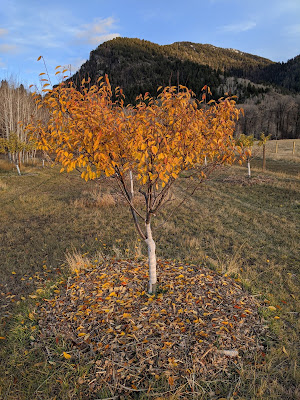Why do Fruit Trees Lose Their Leaves in the Fall?
Fall is coming to an end! Why is it that fruit trees lose their leaves in the Fall?
Fruit trees use the light of the sun to create sugars that they use to live and grow. Sugar is also the reason you and I like fruit so much! This process of converting water, and carbon dioxide into sugar is called photosynthesis and is one of the foundations of life on earth. Photosynthesis occurs primarily in the leaves, although some plants like the Palo Verde Tree in desert climates will actually photosynthesize in their bark tissue, which is why the bark is so green. The Spanish words Palo Verde literally translate to "branch green" or in English we would say, "green branch".
Abscission and dormancy is a good thing because it allows trees to rest and it gives the tree a chance to regenerate new leaves in the spring. Imagine if your fruit trees had to live with bug eaten, hail damaged, or drought riddled leaves for the rest of their lives. When leaves get old and tattered, they fall off in the autumn months and grow new, fresh leaves in the spring. What a great opportunity for your trees to get a fresh start! It's like a New Year resolution.
When the leaves on your trees do fall, don't get rid of them. They make the best compost, or you can spread them out around the base of your fruit trees to keep weeds down. If you put a large enough layer of leaves or other mulch it will improve the water retention in your soil and slowly breakdown and feed your trees.
Thanks for Reading! If you would like to learn more about the care and pruning of fruit trees, please browse our 100+ fruit tree articles here, join our Backyard Fruit Growers Facebook Group, and take our free Fruit Tree Pruning Course. Also, please subscribe to our Fruit Pruning YouTube Channel.








Nice one ��
ReplyDeleteThanks Bhawna!
ReplyDelete